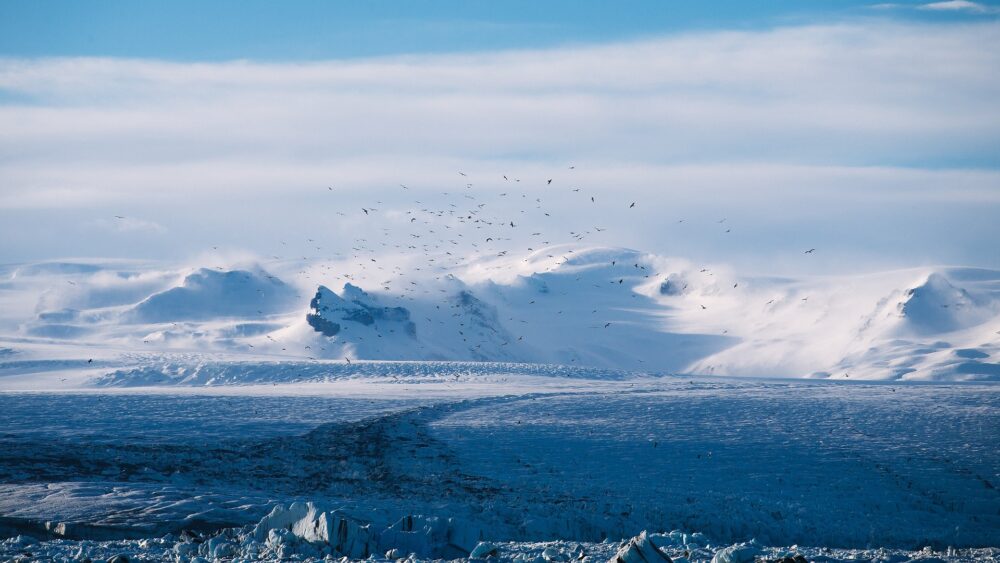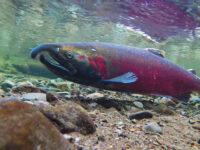As Bostonians, rising sea levels are a familiar concern, with multiple reports projecting which neighborhoods will be underwater by 2050. As shocking as these maps are, they do not convey the full scope of the issue. If nothing is done, global sea levels are expected to rise 25-123 centimeters and 0.5–5 percent of the global population is expected to be flooded annually by 2100, displacing millions of people around the world and costing billions in damages.
While most preventative efforts focus on changing the behaviors of people, some scientists think the necessary first step is to alter our planet. A recent Nature paper from Moore et. al identifies the main contributors to rising sea levels as polar ice masses: sheets, shelves, and glaciers, melting or collapsing due to warming air and seas. As these ice masses melt, global oceans are projected to rise approximately 20 centimeters by 2050. By 2100, most large coastal cities will face sea levels over a meter higher than current levels. The proposed solution – a temporary one, buying the international community time to come up with a more permanent answer to global climate change – is to artificially modify the areas in and around polar glaciers, an endeavor known as polar glacier geoengineering.
The proposed solution – a temporary one – is to artificially modify the areas in and around polar glaciers, an endeavor known as polar glacier geoengineering.
To test the waters of glacial geoengineering, they propose first building an artificial embankment to slow the outflow of ice from the base of the Jakobshavn glacier in western Greenland. This glacier is one of the fastest-moving ice masses on Earth, contributing more to rising sea levels than any other glacier in the Northern Hemisphere. As warm water laps at the base of the glacier, its ice melts and flows away. This barrier, called a berm, will slow the rate of melting by preventing the inflow of warm water, leading to the formation of more sea ice and the stabilization of the glacier. However, there are some drawbacks: construction would be environmentally and economically disruptive as well as expensive, though much less so than other civil engineering projects of similar scale. For example, glacial meltwater carries rich sediment, which marine life feeds on; stemming this outflow will impact the surrounding marine ecosystems. However, the successes and shortcomings of this project can provide valuable insight into the feasibility of similar measures and will inform larger-scale projects at even higher-risk glaciers.
As snow falls and compacts on ice sheets or glaciers, these ice masses thicken and flow down the coastline towards the sea. This cycle forms ice shelves, thick floating platforms of ice. Pinned in by islands and rocks, they serve as barriers that limit how much ice is lost to the ocean. But these ice shelves, subject to warming air and waters, are collapsing at an alarming rate. The Larsen B ice shelf suffered such a collapse in 2002, when it released an estimated 720 billion tons of ice into the sea.
To preserve these key barriers and the glaciers that they protect, researchers offered a second proposal: to pin ice shelves in place in front of the Pine Island and Thwaites glaciers in West Antarctica. These glaciers are two of the greatest contributors to global sea level rise, projected to contribute four centimeters per year by 2150. The pinning of these ice shelves would require the construction of large berms and artificial islands, demanding 60 times the amount of materials for the Jakobshavn glacier project. Currently, engineering technology is not ready to attempt this project. It’s difficult to work around the ice shelves, which grow and shrink as conditions fluctuate, and operating beneath floating ice is nigh impossible with current technologies. Despite these difficulties, this project is still extremely valuable to pursue: stemming glacial flow in this region might buy us decades to come up with more permanent solutions, a delay that we desperately need.
As risky as these measures may prove to be – demanding nontrivial expense and labor, disrupting ecosystems – the alternative of doing nothing is far riskier.
The final proposal is the most ambitious of the three. As ice slides along the glacier bed, water from frictional heating or seasonal melting acts as a lubricant, speeding up the ice flow. If this thin layer of water were to be removed, the movement of the glacier will stall, and as outflow slows, the ice will thicken. This article proposes a pumping station that freezes or extracts the water that lubricates the base of the glacier, increasing friction and slowing outflow. The primary issue with this proposal is access – glacial beds are hidden beneath sheets of ice a kilometer thick. This drilling effort would not be entirely unprecedented: in Engabreen, Norway, a network of tunnels in the bedrock feeds around 40 cubic meters of meltwater each second from the base of the Svartisen glaciers to a hydropower plant. While technologically feasible, this project will prove to be astronomically expensive, with a similar budget to the Svartisen tunnel project with an estimated budget of 500 million dollars.
As risky as these measures may prove to be – demanding nontrivial expense and labor, disrupting ecosystems – the alternative of doing nothing is far riskier. The authors of this paper urge immediate action despite the risks: “We understand the hesitancy to interfere with glaciers — as glaciologists, we know the pristine beauty of these places. But we have also stood on ice shelves that are now open ocean.” However, even direct action to preserve polar ice will only buy us time. Without addressing the primary agent of climate change – greenhouse gas emissions – our problems will continue. Our planet will survive, as it has when faced with other environmental disasters throughout Earth’s history, but will we?
doi:10.1038/d41586-018-03036-4


